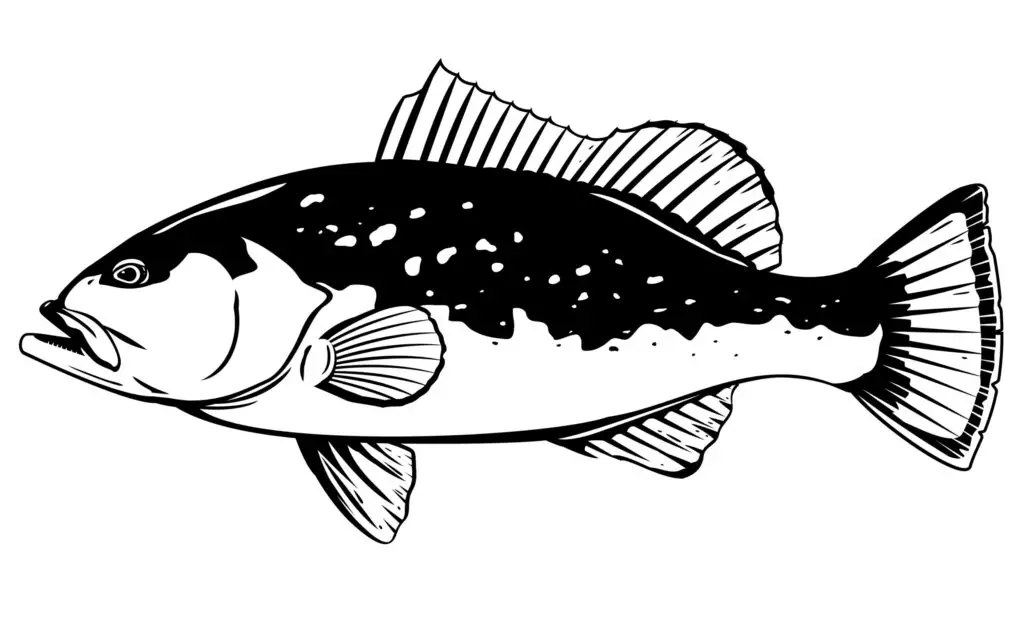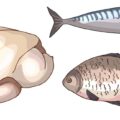Grouper and lingcod differ in their characteristics, distribution, habitat, nutritional contents, and much more. Though similarities can be seen in the cases of taste and diet, the dissimilarities are far more pronounced.
Genus difference between grouper and lingcod
Groupers belong to the subfamily Epinephelinae of the family Serranidae and are spread across several genera. All members of the Serranidae family except sea bass are called groupers. There are various species of groupers, like black groupers, goliath grouper, warsaw grouper, scamp grouper, and more.
On the other hand, lingcod (Ophiodon elongatus) are fish of the greenling family Hexagrammidae under the genus Ophiodon. In fact, they are the only extant members of this genus after the extinction of Ophiodon ozymandias. They are also known as buffalo cod or cultus cod, despite not having much in common with cod.

How to distinguish between a grouper and a lingcod?
A grouper and a lingcod may have some similarities in appearance, but it is not difficult to tell them apart.
Lingcod comes in a few different colors, like dark gray and brown. Some may have a greenish back with some copper-colored mottling or spotting on the upper side. They have a large head and mouth, which gives them the name “Buckethead.” A total of 18 large and sharp teeth are revealed inside their mouths. They can grow up to five feet and eighty pounds.
Grouper also have large mouths like lingcod, but they barely have any teeth. They only have strong teeth and plates inside their pharynx to crush their food. They have a heavy and robust body, much chubbier in comparison to your average lingcod. In fact, they can grow to more than 880 pounds.
The brownish, mottled body of groupers also has some resemblance to lingcod, but groupers can be identified easily with their round anal and elongated dorsal fins. They also usually have small spots patterning on their backs. Groupers are also identified by the reddish, violet, and orange tones on their bodies.

Do groupers and lingcod live in the same place?
Groupers and lingcod will usually be found in different waters. Lingcod lives mostly on Kodiak Island, which is in the Gulf of Alaska and goes all the way down to Baja, California. These fish are most abundant near British Columbia and Washington.
As for groupers, they mostly live in Indo-Pacific distribution, stretching in areas of the Indian and Pacific oceans along the coastline of Australia, Africa, and Asia. They are most abundant in the Mid-Atlantic states and Florida to South America, Central America, and the Gulf of Mexico.
Groupers are predominantly known as reef fish and usually inhabit the rocky and coral reefs of the tropics and sub-tropics. They are often found near ledges, shipwrecks, and concrete structures near the bottom, as they tend to be bottom feeders.
On the other hand, the habitat of lingcod differs vastly among different age groups. The larvae tend to stay near the surface of the oceans, while the juveniles prefer to stay nearshore on sandy ocean bottoms near eelgrass or kelp beds. After they grow a little older, they head for the rocky habitats surrounded by seaweed, kelp, and eelgrass beds.
Does a grouper taste the same as a lingcod?
Grouper and lingcod taste similar to a great extent, and many people won’t be able to point out a significant difference between the tastes of the two. Yet, some small differences do exist.
Both grouper and lingcod come with a mild flavor profile, which gives you scope to cook them in various different ways and add spices in any way you want. The subtle flavor easily absorbs different dressings and marinades. Both also come with large, chunky flakes. Hence the taste of both is often compared to halibut and cod.
However, the flesh of grouper is comparatively sweeter than that of lingcod, though the sweetness is very subtle. Red groupers are usually sweeter than black groupers, and some other differences are noticed depending on species and location. Groupers have a firmer texture than lingcod, as well as a higher moisture content. Though it depends on the way you cook it, the flesh of groupers is juicier than lingcod too.
Dietary differences between grouper and lingcod
The diet of a fish greatly impacts the way they taste. Lingcod and groupers are both bottom feeders, but their flesh does not carry any muddy taste. They are also both omnivores. Groupers live on crustaceans like crabs, lobsters, and shrimp for most of their early lives, and then they add smaller fish as well as octopuses after growing a little older. Some even aim for sea turtles. As for lingcod, the diet is mostly similar. They also feed on bottom-dwelling fish like crabs, shrimp, octopi, and squid. The juveniles like to eat small fish. The main difference in the diets of lingcod and grouper is that lingcod’s diet also includes zooplankton, which are tiny floating animals found all over a water body. Since groupers are vastly larger in size than lingcod, zooplankton is never in their diet.
Nutritional differences between grouper and lingcod
Fish are always high in protein and minerals. It’s better to know the nutritional qualities of every fish to know which one is better to meet your dietary needs. Groupers and lingcod also have their own nutritional benefits. When it comes to iron, grouper has three times more iron than lingcod. If you need more iron in your diet, eating small servings of grouper will be more beneficial compared to a lingcod.
On the other hand, lingcod contains 3.6 micrograms of Vitamin B-12, which is much higher compared to the 0.6 micrograms offered by a grouper. Lingcod also contains nearly two times more vitamin B3 than grouper and even a higher amount of Vitamin B2. But groupers give you more Vitamin A, which is important for healthy vision and proper growth and development.
As for important minerals like potassium and phosphorus, the two are nearly the same in amount, but grouper has a little more. The same goes for calcium, where grouper leads by nearly 93% compared to lingcod, making it the ideal fish for bone health.
In conclusion, the similarities between groupers and lingcod end with their diets and tastes. They are dissimilar in terms of most other factors.











